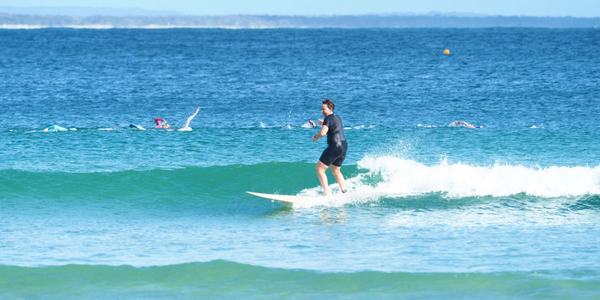Anatomy of a wave
- Surf Getaways

- Jan 24, 2023
- 3 min read
Updated: Feb 8, 2023

One of the most challenging parts of surfing is learning and understanding how to read the ocean. Because the water is in constant movement and no two waves are the same, it’s challenging to predict and decide how to perform on a wave. Including adapting your technique and choosing your manoeuvres depending on what the wave is doing at any one time.
That said, there are some general sections that most waves will present. It takes a while to identify each part and understand when and why you need to be on them. But once you get familiar with the anatomy of a wave, your surfing will reach the next level.
We’re going to cover off the different parts of a wave, and walk through when you want to be on each of them to ride a wave successfully and safely.
Face/shoulder

This part of a wave is where surfers look to go. The shoulder of a wave is the inclined section that loses steepness the further out it is from its peak until becoming flat water. When you ride too far forward off the face of the wave, you start to lose speed with the risk of being left behind.
Peak

Here is the ideal spot to catch a green wave. The peak is where the surfer finds enough power that together with paddling, they match the speed of the wave and can perform a successful takeoff. As you catch the wave at the peak, you can slide down into the pocket, the section where you want to be riding the wave.
Curl/pocket

The curl or pocket of a wave is where most of the power is generated and the optimal area where surfers want to ride the wave. If you go too far/too quick towards the face and are losing speed, you want to go back to the curl, where you can gain power again.
Lip

The lip is a powerful section of the wave, and the one where advanced surfers perform the most radical manoeuvres. The lip is where the wave starts to curl over and is on its way to crush the flat water.
Tube

As the name explains, a tube forms when the lip crushes over the bottom of a wave creating a cylindrical shaped barrel with enough space for the surfer to stay inside. Being inside a tube is probably the most complex manoeuvre a surfer dreams of performing. Tube riding requires a lot of technique and experience and is a matter of being in the correct position, at the right time, and in ideal conditions. But finding a wave that forms into a tube rarely happens, so getting barrelled is quite an achievement for most surfers.
Impact zone

This area is where no one wants to find themselves, especially on days when waves are big and powerful. You can read tips and tricks on how to cross the impact zone and reach the lineup safely here.
Whitewash

The whitewash forms when the wave breaks and travels the shore as water foam. This section is optimal for learning to surf and catching your first waves as the whitewash is very predictable, with less power and leads to the shore or a calm water area.
It takes time to understand and learn to read the waves, so don’t get frustrated if you aren’t where you want to be. We recommend you spend time in the water and at the beach observing the ocean, learning from other more experienced surfers and analysing their positioning, wave riding and movement around the lineup. You can also join us at one of our Surf Clinics or Surf Experiences to learn from our experienced surf coaches that will teach you how to read and understand the ocean and the waves.






Comments